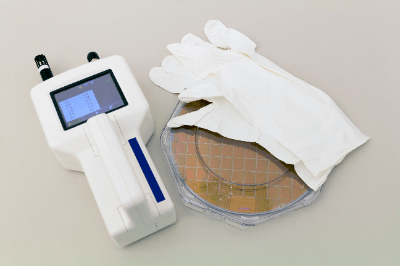What Is a Particle Counter?

A particle counter is an instrument used to measure the number of particles suspended in the air or water. It is commonly used for environmental management in areas where cleanliness is crucial, such as clean rooms.
Uses of Particle Counters
Particle counters are essential in industries requiring high levels of cleanliness, such as semiconductors, precision machinery, food, and pharmaceutical manufacturing. They measure airborne dust and mold, which can significantly impact manufacturing yields, quality, and safety. To maintain air purity, clean rooms, and air curtains are installed in these industries, with particle counters used to monitor air particle levels. The technology is also applicable in space and nuclear fields.
Principle of Particle Counters
Particle counters function by shining light onto particles and measuring the light scattered by them. They consist of a sample supply section for collecting and supplying particles to the detection section, a light irradiation section for shining light on the particles, and a detection section for capturing the scattered light. When sample particles are irradiated with light, the scattered light is focused onto a photodiode, converted into an electrical signal, and detected. The size of the detected particles is determined based on the intensity of the scattering, compared to a known reference particle. Both particle size and concentration can be calculated from these measurements.
How to Select a Particle Counter
When selecting a particle counter, consider its measurable particle concentration, size, and sample collection capability. The higher the flow rate of the sample, the more accurate the measurement up to a certain concentration. However, measuring near the upper limit of concentration can result in inaccuracies. The measurable particle size should match the specifications of the intended clean room to avoid significant errors. The sample collection capacity is also crucial, as large or distant particles may not be accurately measured. Even if the counter shows zero, the presence of larger particles should be considered.
Other information on particle counters
The difference between a particle counter and a Dust Meter lies in their measurement methods. Dust meters and monitors measure light scattered by particles in clusters, calculating concentration based on a known reference gas. They are suitable for environments with many particles and can measure up to high concentrations. Particle counters, on the other hand, measure individual particles. Dust meters and monitors are more suitable for high dust concentration environments, requiring lower suction rates compared to particle counters, which need higher suction speeds for reliable measurements.
Particle counters are used to assess and control particle contamination, as smaller particles are harder to remove in subsequent processes. Determining the size and number of particles suspended in the air is crucial for maintaining the required cleanliness level.